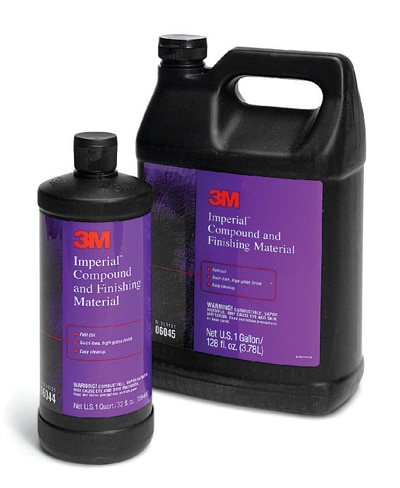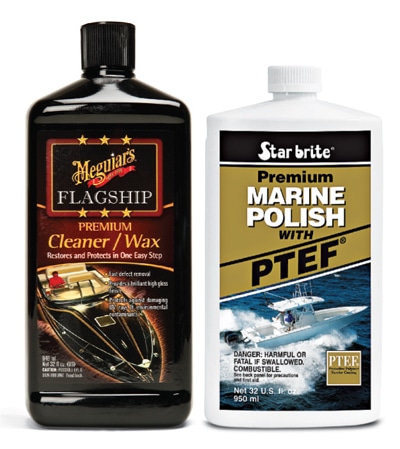So you’ve just bought a new boat. Its gelcoat is glistening now, but eventually some of that luster will fade. Don’t fret! Chances are you can bring it back to life before your next launch.
Rinse/Wash/Rinse
First give the boat a thorough rinsing from the top down. This will remove surface dirt and dust particles that would abrade the finish if you simply hit the surface with a soapy brush. After the initial rinsing, it’s time to perform a thorough wash with a cleaning product approved for fiberglass gelcoats, such as West Marine’s WM Boat Soap or Star Brite’s Sea Safe Boat Wash. (Many household soaps and general cleaners might contain chemicals or abrasives that are too harsh for gelcoated surfaces.) Finish with another full rinse.
Assess
Now you can assess the true condition of the finish. Gelcoat shines because it’s a smooth surface that reflects light. Even microscopic irregularities can diminish that shine, but those same irregularities might be restored with just a very mild polish such as Star Brite’s Premium Marine Polish with PTEF. Pick an area to test. If two or three passes with the polish don’t yield the desired results, move to a mild abrasive polish like Meguiar’s Premium Cleaner/ Wax or Color Restorer. If oxidation is heavier and cleaner doesn’t do the trick, only then should you consider a cutting compound. Again, start with a less aggressive formula like 3M’s Marine Rubbing Compound, and move to a more aggressive compound such as 3M’s Marine Super Duty Rubbing Compound only as a last resort.

Polish
If polishing is all that’s needed, apply liquid polish by hand using polishing cloths (clean bits of cotton cloth with seams removed will also work).
When using a polishing paste, apply it with an orbital buffer, starting at a lower rpm of 1,400 or so to avoid burning the surface. Rather than apply paste to the buffing pad, place small dabs along the surface. When the paste is gone, stop buffing, as you can actually mar the surface by continuing to buff with a dry pad.
Seal
After finishing with any combination of cleaning polish and rubbing compound to eliminate oxidation, you now need to seal the surface using a polymer polish such as the Star Brite product pictured below. Two coats of polish will provide a season’s worth of protection — though it might be a good idea to do a midseason touch-up if the boat has prolonged exposure to the elements. If the boat is properly coated in a quality polymer polish, there’s no need to go over the finish with traditional paste waxes.

Maintaining the finish on your new boat isn’t so tough. Do a thorough job of cleaning and restoring it this year, and come next season, you’ll need only to wipe on a couple of coats of sealing polish, and you’ll be good to go.









